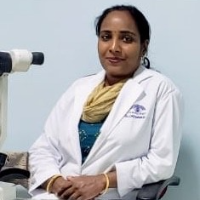IOVS 2025

Aravind Eye Hospital, India
Abstract:
The prevalence of Keratoconus among family members of diagnosed Keratoconus patients is unknown. Screening first-degree relatives helps to identify the prevalence and subclinical cases of Keratoconus. Identifying subclinical cases aids in preventing the progression of Keratoconus. Thereby, preventing the environmental factors which cause the progression of the disease. This prospective case-control study conducted at a tertiary eye care center in South India from July to September 2024 aimed to investigate the prevalence of keratoconus among first-degree relatives of diagnosed patients using corneal topography and explore familial aggregation. First-degree family members of 29 keratoconus-diagnosed patients were invited, with 22 families consenting, resulting in 59 topographies compared with 82 controls. The topographical parameters assessed were Kmax (>47D), 3mm zone (>1.5D), 5mm zone (>2.5D), Thinnest corneal thickness (55D). The findings revealed that 54% of relatives exhibited either topographical features of keratoconus (15%) or two or more keratoconus traits (39%). Mann-Whitney test analysis showed a significant difference (p
Biography:
Dr. Lokeshwari Aruljyothi, with 15+ years in India's ophthalmology sector and a decade focused on cornea and refractive surgeries at a WHO-affiliated hospital, brings extensive expertise. Having performed 5000+ ocular procedures, including Phacoemulsification, LASIK, and corneal repairs, she holds an MS in Health Informatics from the University of Kansas, USA, emphasizing clinical informatics. With papers in national/international journals, she pursues a Clinical Research Fellowship at the University of Michigan. Her compassionate care and specialized skills make her a valuable asset in eye care, blending surgical proficiency with a deep understanding of health informatics and research.
